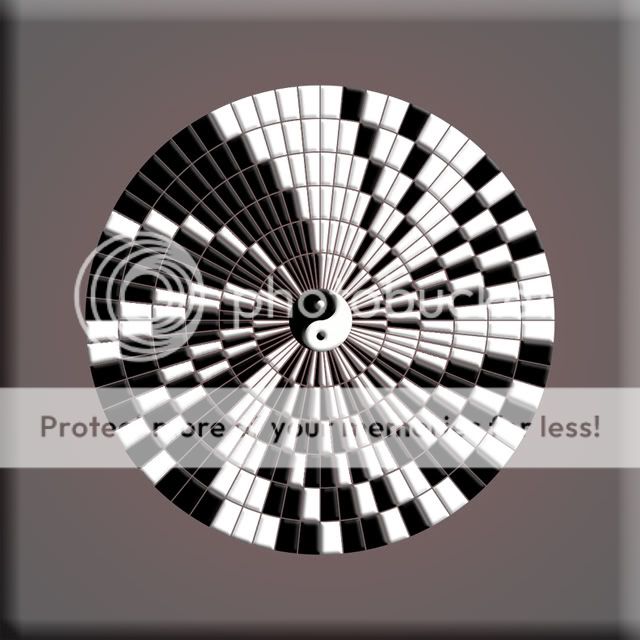Clarity,
Office 17622,
PO Box 6945,
London.
W1A 6US
United Kingdom
Phone/ Voicemail:
+44 (0)20 3287 3053 (UK)
+1 (561) 459-4758 (US).

I'm not sure myself how many unique solutions exist.
Unique being not reflected or inversed.
I can't think of another way to generate it myself, just the self referencing method I used.
Seems the Chinese did know about this arrangement:
http://www.onlineclarity.co.uk/frien...ead.php?t=5053
That is the only place I've ever seen it mentioned.
...
I Ching Code Wheel

From;: http://forums.abrahadabra.com/showthread.php?3277-64-bit-I-Ching-Binary-Loop-Wheel/page2
The problem of constructing memory wheels is known as the rotating drum problem. The circular binary are often called lenght shift register sequences or de Bruijn sequences after the Dutch mathematician N.G. de Bruijn who wrote about them in 1946 (although it turned out that they had been constructed many years before by C. Flie Sainte-Marie). They have been used worldwide in telecomunications, and there have recen applications in biology.
Fig 4.18 page 84
Ian Anderson
A First Curse in Discrete Mathematics
In his study on memory wheels the Dutch engineer K.Posthumus found that there is exactly one wheel for binari cuplets, two for binary triplets, 16 for binary quadruplets (4 bits) and 2048 forr binary quintuplets (5 bits). <he then conjectured that there are 2^((2^n-1)-n) different memory wheels for binary n-tuples . In 1946 de Bruijn established his conjecture.
Thomas Koshy
Discrete mathematics with applications
Page 703
Stein traced the first such memory wheel to India of about 1000 AD. The next use of a memory wheel was in France in 1882, where Emile Baudot used it for 32 quintuplet telegraphy. In this past century, memory wheels, also called de Bruijn cycles, have been used in a variety of applications, ranging from probability theory, coding, and communications.
Stein quotes the Sanskrit sutra, yamatarajabhanasalagam, which describes all possible triplets of short and long syllables, as evidence of the Indian knowledge of a memory wheel of length 3. Since Sanskrit metres are based on the system of short, laghu, and long, guru, syllables, represented traditionally by j and S (by us as 1 and 0), the sutra may be written as:
1000101110 which represents the sequences 100, 000, 001, 010, 101, 011, 111, 110
Subhash Kak
Yamatarajabhanasalagam: An Interesting Combinatoric Sutra
Indian Journal o history of Science
At: http://citeseerx.ist.psu.edu/viewdoc/download?doi=10.1.1.57.9025&rep=rep1&type=pdf
Hi, Ros:Thanks Charley!
Wouldn't it be fun to have this design on a quilt?!!
Rosada
Luis:... I'll have to spend some time with it...
This is what Steve Marshall says of the MYSTERY SEQUENCE:...
Have you read something in W/B about a MYSTERY SEQUENCE ?
...
On the 'I Ching Sequencer' website it is possible to advance the hexagrams one at a time, as well as watch them loop. The three sequences run concurrently, with the 'mystery sequence' displayed largest. I'd never really taken a good look at this particular sequence at the back of Wilhelm-Baynes (pp 730–731, in the third edition), but it appears the animator is right, this is indeed a mystery. I have no idea at present what this sequence is or from where it originates (it doesn't appear in the first edition). But it is certainly a fascinating and aesthetically satisfying sequence when seen as a Flash animation. Notice that through the first 7 hexagrams a single yin line appears to rise up through the all-yang Qian hexagram. Then two yin lines appear to perform the same trick together. Then the trigram Kan rises up through Qian, which suggests that in the first two phases rather than a single yin and two yin rising up it is in fact the trigrams Li and Gen rising up, respectively. But by the 17th hexagram of the sequence this pattern is lost and one suspects that rather than a trigram rising up through a hexagram it is in fact a hexagram rising up through a hexagram, but that would require a more detailed study of the sequence, these are just a few provisional observations, first thoughts. By the 23rd in the sequence we see the familiar pattern again with three yin lines rising up together. By the end of the sequence, in the final seven hexagrams, we see a single yang line rising up through the all-yin hexagram Kun, just as a single yin rose up through all-yang Qian at the start.
from: http://www.biroco.com/yijing/sequence.htm
...The source: ... http://iching.egoplex.com/mystery-sequence.html
 ]
]




 ___ H.1 KWS
___ H.1 KWS


















































 ___ H.2 KWS
___ H.2 KWSThe individual lines enter the hexagram from below and leave it again at
the top.
From H.11 Peace
Clarity,
Office 17622,
PO Box 6945,
London.
W1A 6US
United Kingdom
Phone/ Voicemail:
+44 (0)20 3287 3053 (UK)
+1 (561) 459-4758 (US).